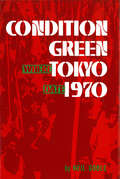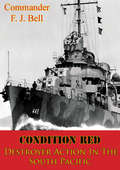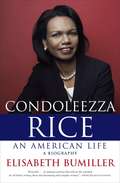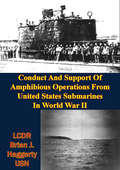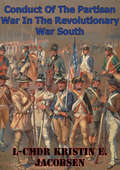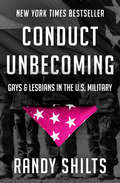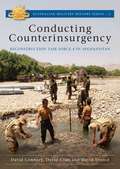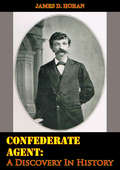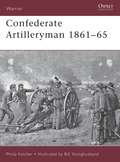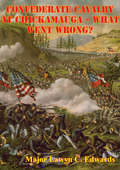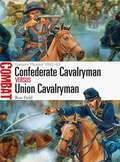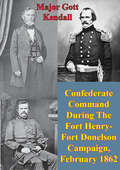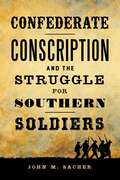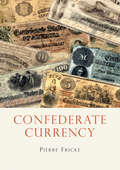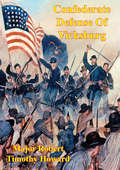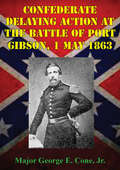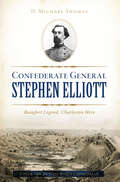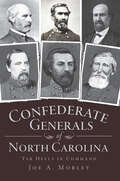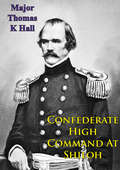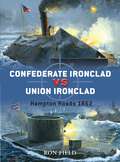- Table View
- List View
Condition Green Tokyo 1970
by Neil GobleFACT: Condition Green: Tokyo was the warning posted almost daily at the gates of U.S. bases in Japan during May, 1960, when the US-Japan Security Treaty was revised and extended. Communist-led riots and demonstrations opposed to the treaty made it unsafe for Americans on the streets of Tokyo. Homes were burned, autos overturned, government offices ransacked. Americans were attacked, a leading politician assassinated, hundreds injured, and many killed. The revised treaty passed the Diet, but Leftist discontent forded the Prime Minister to resign.FICTION: U.S. Intelligence learns that Japanese Communists plan to seize control of the government on May Day 1970, but due to a rising tide of anti-American feelings and bloody anti-government rioting, is powerless to act. Only by dramatic and positive proof of a Red betrayal could the U.S. hope to turn the tide of popular sentiment against the Communists. Capt. Joe Holiday is sent on an 11th-hour reconnaissance flight over Communist China and Russia in hope of obtaining such proof-and obtain it he does. But to get the evidence into the proper hands, he must evade a swarm of Soviet fighters with his unarmed aircraft, and run a last deadly gauntlet of Soviet Surface-to-Air Missile sites.
Condition Green Tokyo 1970
by Neil GobleFACT: Condition Green: Tokyo was the warning posted almost daily at the gates of U.S. bases in Japan during May, 1960, when the US-Japan Security Treaty was revised and extended. Communist-led riots and demonstrations opposed to the treaty made it unsafe for Americans on the streets of Tokyo. Homes were burned, autos overturned, government offices ransacked. Americans were attacked, a leading politician assassinated, hundreds injured, and many killed. The revised treaty passed the Diet, but Leftist discontent forded the Prime Minister to resign.FICTION: U.S. Intelligence learns that Japanese Communists plan to seize control of the government on May Day 1970, but due to a rising tide of anti-American feelings and bloody anti-government rioting, is powerless to act. Only by dramatic and positive proof of a Red betrayal could the U.S. hope to turn the tide of popular sentiment against the Communists. Capt. Joe Holiday is sent on an 11th-hour reconnaissance flight over Communist China and Russia in hope of obtaining such proof-and obtain it he does. But to get the evidence into the proper hands, he must evade a swarm of Soviet fighters with his unarmed aircraft, and run a last deadly gauntlet of Soviet Surface-to-Air Missile sites.
Condition Red; Destroyer Action In The South Pacific [Illustrated Edition]
by Commander F. J. BellIncludes the Second World War In The Pacific Illustration Pack - 152 maps, plans and photos.Commander Frederick Bell recounts his wartime experiences on the USS G (Grayson) during the Pacific War. "CONDITION RED" was an expression that we used to indicate the imminence of any type of engagement. Aboard the G it was a colloquialism that served to express the conviction that the next few hours or days or weeks were going to be packed with action. We first heard it soon after we arrived in the Solomons, where the term was used on Guadalcanal and Tulagi to indicate the approach of the enemy, and when our voice radio blared out the words we went to General Quarters and prepared to greet the Tokyo Express or the Zeros and Mitsubishis when they came within view.Little has been written of the part that our destroyers are playing in the Pacific War, where they are called upon to fulfil such a variety of missions that they have become multipurpose ships, engaging in any form of combat. Because we lacked suitable escort ships we used destroyers to protect convoys as well as to guard our combatant Task Forces. We used them to bombard enemy shore positions and to carry bombs and aviation gasoline and stores to Guadalcanal during the lean weeks early in our campaign in those far-distant seas.By nature as well as by name, the purpose of the destroyer is wholly offensive. Bantamweights in comparison with the great battlewagons, they pack a punch out of all proportion to their size. They are triple-threat weapons, built to strike at any enemy on or over or under the sea. In the words of Rear Admiral Tisdale, "They are the fightingest thing afloat."
Condoleezza Rice: A Biography
by Elisabeth BumillerCondoleezza Rice, one of most powerful and controversial women in the world, has until now remained a mystery behind an elegant, cool veneer. In this stunning new biography, a "New York Times" reporter peels back the layers and presents a revelatory portrait of the first black female secretary of state.
Conduct And Support Of Amphibious Operations From United States Submarines In World War II
by LCDR Brian J. Haggerty USNThe U.S. Navy is building Virginia class submarines, and recently completed the conversion of four Ohio class submarines from Trident Ballistic Missile Submarines (SSBN's) to Guided Missile Submarines (SSGNs). The Virginia class is the first nuclear powered fast attack submarine (SSN) that shipyards designed with SOF capability without requiring conversion. The SSGN conversion of the first four Ohio class submarines included substantial SOF capability. These construction and conversion projects represent a significant investment in SOF and amphibious capabilities, and they follow a long line of submarine conversions that began early in World War II. By analyzing three World War II operations, this monograph argues that knowing what actually happened in amphibious operations conducted and supported by American submarines in World War II provides valuable insight about the scope of capabilities, challenges and benefits of submarines for these kinds of missions in naval warfare. The first operation is an amphibious raid on Makin Atoll. The second involves the amphibious landings on the northwest Africa coast as part of Operation Torch. The final operation includes the landings on Attu Island in the Aleutian chain.
Conduct Of The Partisan War In The Revolutionary War South
by L-Cmdr Kristin E. JacobsenThe partisan war in the Revolutionary War South demonstrated the vital linkage between the civil and military authorities. In the policies created to persuade the people of the righteousness of the American cause and neutralize opposition, the civil leadership of South Carolina inadvertently set the conditions for a violent civil war. The experiences derived from a century's worth of almost constant conflict, both internal and external, determined the nature of the ensuing civil war. Upon the occupation by the British in 1780, the calm that settled over the Southern colonies was brief, as British military leaders addressed the political problem in such a way as to lead to renewed revolt and an effective partisan campaign. The civil war became intertwined with the overall campaigns of the American and British forces, with the nature of the leaders having equal effect on the concurrent civil war.
Conduct Unbecoming: Gays & Lesbians in the U.S. Military
by Randy Shilts&“A thoroughly researched and engrossingly readable history&” of gay men and women in the American armed forces by the author of And the Band Played On (The New York Times Book Review). Published during the same year the American military instituted Don&’t Ask, Don&’t Tell, and eighteen years before President Barack Obama repealed it, Conduct Unbecoming is a landmark work of social justice and a searing indictment of the military establishment&’s historic bigotry toward its gay servicemen and women. Randy Shilts&’s eye-opening book describes the bravery, both exceptional and everyday, not only of gay soldiers throughout history, but also of gay men and women serving in our modern military. With each anecdote and investigation, Shilts systematically dismantles the arguments against allowing gays to serve in the military. At once a history of the American military and an account of the gay rights movement, Conduct Unbecoming is a remarkable testament to the progress achieved for gays in the military—and a revealing look at how far we have yet to go.
Conduct Under Fire
by John A. GlusmanThe fierce, bloody battles of Bataan and Corregidor in the Philippines are legendary in the annals of World War II. Those who survived faced the horrors of life as prisoners of the Japanese. In Conduct Under Fire, John A. Glusman chronicles these events through the eyes of his father, Murray, and three fellow navy doctors captured on Corregidor in May 1942. Here are the dramatic stories of the fall of Bataan, the siege of "the Rock," and the daily struggles to tend the sick, wounded, and dying during some of the heaviest bombardments of World War II. Here also is the desperate war doctors and corpsmen waged against disease and starvation amid an enemy that viewed surrender as a disgrace. To survive, the POWs functioned as a family. But the ties that bind couldn't protect them from a ruthless counteroffensive waged by American submarines or from the B-29 raids that burned Japan's major cities to the ground. Based on extensive interviews with American, British, Australian, and Japanese veterans, as well as diaries, letters, and war crimes testimony, this is a harrowing account of a brutal clash of cultures, of a race war that escalated into total war. Like Flags of Our Fathers and Ghost Soldiers, Conduct Under Fire is a story of bravery on the battlefield and ingenuity behind barbed wire, one that reveals the long shadow the war cast on the lives of those who fought it.
Conduct Under Fire: Four American Doctors and Their Fight for Life as Prisoners of the Japanese, 1941-1945
by John A. GlusmanThe fierce, bloody battles of Bataan and Corregidor in the Philippines are legendary in the annals of World War II. Those who survived faced the horrors of life as prisoners ofthe Japanese.In Conduct Under Fire, John A. Glusman chronicles these events through the eyes of his father, Murray, and three fellow navy doctors captured on Corregidor in May 1942. Here are the dramatic stories of the fall of Bataan, the siege of "the Rock," and the daily struggles to tend the sick, wounded, and dying during some of the heaviest bombardments of World War II. Here also is the desperate war doctors and corpsmen waged against disease and starvation amid an enemy that viewed surrender as a disgrace. To survive, the POWs functioned as a family. But the ties that bind couldn't protect them from a ruthless counteroffensive waged by American submarines or from the B-29 raids that burned Japan's major cities to the ground. Based on extensive interviews with American, British, Australian, and Japanese veterans, as well as diaries, letters, and war crimes testimony, this is a harrowing account of a brutal clash of cultures, of a race war that escalated into total war.Like Flags of Our Fathers and Ghost Soldiers, Conduct Under Fire is a story of bravery on the battlefield and ingenuity behind barbed wire, one that reveals the long shadow the war cast on the lives of those who fought it.
Conducting Counterinsurgency: Reconstruction Task Force 4 in Afghanistan (Australian Military History #2)
by David Evered David Cran Colonel David ConneryConducting Counterinsurgency uses the personal experiences of officers and soldiers from RTF4 - described in their own words - to illustrate the principles of counterinsurgency operations. The book provides a vivid and personal snapshot of the work of these soldiers, the challenges they faced and their interaction with the local people during their tour of duty. This is a first-hand account of counterinsurgency operations conducted by the contemporary Australian Army in its fight against the Taliban. Conducting Counterinsurgency sheds light on the little- understood operations of the Australian Army in Afghanistan and is a must for military professionals and commentators.
Confederate Agent: A Discovery In History
by James D. HoranWith never-before published contemporary photographs, facsimile documents and other illustrations...The true story of the conspiracy that came close to destroying the Union from within, getting Illinois, Indiana and Ohio to join the Confederacy while New York City was in flames. Chicago was ready for rebellion, 100,000 Northern Confederates stood ready to strike. Based on official papers hitherto suppressed by the U.S. War Dept.—the secret and unpublished diaries of Capt. Thomas H. Hines, C.S.A., official agent of the Confederate government and mastermind of its underground.— Print Ed.
Confederate Artilleryman 1861-65
by Bill Younghusband Philip KatcherIn the heady days of the rush to arms in 1861, comparatively few Southern men volunteered for service in the artillery: most preferred the easily accessible glory of the infantry or cavalry. Yet those that did, quickly earned the respect of their fellow soldiers, and a reputation for being able to "pull through deeper mud, ford deeper springs, shoot faster, swear louder ... than any other class of men in the service" during the American Civil War (1861-1865). Given that field artillery was invariably deployed in front of the troops that it was supporting, the artillerymen were exposed to a high level of enemy fire, and losses were significant. This title guides the reader through the life and experiences of the Confederate cannoneer - where he came from; how he trained and lived; how he dressed, ate and was equipped; and how he fought.
Confederate Cavalry At Chickamauga - What Went Wrong?
by Major Lawyn C. EdwardsThis study investigates General Braxton Bragg’s use of cavalry during the pivotal Tullahoma and Chickamauga Campaigns. As army commander, Bragg was responsible for organizing units, selecting commanders, and assigning missions. His decisions had significant impact upon the tactical and operational fortunes of the Army of Tennessee and on Confederate strategy.First, this investigation defines the unique heritage of American cavalry. Second, it addresses the actual employment of cavalry in the United States of America. Did these roles coincide with those of European cavalry? Did available army and cavalry leadership play a crucial part in the successes and failures of Confederate plans? Do the careers of Generals Bragg, Wheeler, and Forrest offer clues to their efforts at Chickamauga? Also, how did the elements of national power (political, military, economic, geographic, and national will), contribute to Confederate cavalry performance?This study concludes that blame is to be shared between the commanders involved and the system within which they fought. This study presents an in depth view of the performance of Confederate cavalry in this “victory” at the “River of Death”.
Confederate Cavalryman vs Union Cavalryman: Eastern Theater 1861-65
by Peter Dennis Ron FieldThis gripping study offers key insights into the tactics, leadership, combat performance, and subsequent reputations of Union and Confederate mounted units fighting in three pivotal cavalry actions of the Civil War - Second Bull Run/Manassas (1862), Buckland Mills (1863), and Tom's Brook (1864). During the intense, sprawling conflict that was the Civil War, both Union and Confederate forces fielded substantial numbers of cavalry, which carried out the crucial tasks of reconnaissance, raiding, and conveying messages. The perception was that cavalry's effectiveness on the battlefield would be drastically reduced in this age of improved mass infantry firepower. This book demonstrates how cavalry's lethal combination of mobility and dismounted firepower meant it was still very much a force to be reckoned with in battle. It also charts the swing in the qualitative difference of the cavalry forces fielded by the two sides as the war progressed, as the enormous initial superiority enjoyed by Confederate cavalry was gradually eroded, through the Union's outstanding improvements in training and tactics, and the bold and enterprising leadership of men such as Philip Sheridan. Featuring full-color artwork, specially drawn maps, and archive illustrations.
Confederate Command During The Fort Henry-Fort Donelson Campaign, February 1862
by Major Gott KendallThis study investigates the decisive factors that affected the Fort Henry-Fort Donelson campaign in February 1862. The thesis is relevant not only to the study of history, but as a series of lessons for all commanders.In the final analysis, the ultimate failure of the Confederates during this campaign can be attributed directly to the actions of General Albert Sidney Johnston. He failed to develop an adequate strategy to meet the expected invasion from the North or to insure that each subordinate command in his department was prepared for the onslaught. Johnston also failed to establish a command structure to support his Department. Most damaging of all, Johnston neglected the defenses of the Tennessee and Cumberland rivers, which served as invasion routes through the center of his department.Ironically, one of the worst generals of the Confederacy correctly saw Fort Donelson as the key to stopping Grant and protecting Nashville. Had he been better supported by his superiors and by the officers serving at the fort with him, the Confederates may have won a victory at Fort Donelson and secured the Western Department for several months.
Confederate Conscription and the Struggle for Southern Soldiers
by John M. SacherWinner of the Jules and Frances Landry AwardIn April 1862, the Confederacy faced a dire military situation. Its forces were badly outnumbered, the Union army was threatening on all sides, and the twelve-month enlistment period for original volunteers would soon expire. In response to these circumstances, the Confederate Congress passed the first national conscription law in United States history. This initiative touched off a struggle for healthy white male bodies—both for the army and on the home front, where they oversaw enslaved laborers and helped produce food and supplies for the front lines—that lasted till the end of the war. John M. Sacher’s history of Confederate conscription serves as the first comprehensive examination of the topic in nearly one hundred years, providing fresh insights into and drawing new conclusions about the southern draft program. Often summarily dismissed as a detested policy that violated states’ rights and forced nonslaveholders to fight for planters, the conscription law elicited strong responses from southerners wanting to devise the best way to guarantee what they perceived as shared sacrifice. Most who bristled at the compulsory draft did so believing it did not align with their vision of the Confederacy. As Sacher reveals, white southerners’ desire to protect their families, support their communities, and ensure the continuation of slavery shaped their reaction to conscription. For three years, Confederates tried to achieve victory on the battlefield while simultaneously promoting their vision of individual liberty for whites and states’ rights. While they failed in that quest, Sacher demonstrates that southerners’ response to the 1862 conscription law did not determine their commitment to the Confederate cause. Instead, the implementation of the draft spurred a debate about sacrifice—both physical and ideological—as the Confederacy’s insatiable demand for soldiers only grew in the face of a grueling war.
Confederate Currency
by Pierre FrickeWith the outbreak of the U. S. Civil War in 1861, the Confederate States of America began issuing its own paper money. Over the years, seven different series of currency were issued. Counterfeiting became a significant problem for the South, as did depreciation and inflation. By the end of the war, the notes were worthless, but within the decade their collectability was on the rise. Today, some notes can easily garner thousands of dollars. Uniquely designed and hand-signed, the paper money of the South tells the story of the new nation. Confederate currency expert Pierre Fricke illustrates the history of the South's money in Confederate Currency. Neither a price guide nor a catalog per se (see Collecting Confederate Paper Money by Pierre Fricke), Confederate Currency explains the origins of the various notes issued by the South, putting the money into historical context. Fricke also briefly discusses the dissolution of the Union and examines the collectability of Confederate Currency.
Confederate Defense Of Vicksburg: A Case Study Of The Principle Of The Offensive In The Defense
by Major Robert Timothy HowardThis study concerns an analysis of the Confederate defense of Vicksburg with respect to one of the nine principles of war, the principle of the offensive. The loss of Vicksburg in the American Civil War was a mortal blow to the Confederacy in that it split the south in two and resulted in the opening of the Mississippi River to the Union forces. During the Campaign for Vicksburg General Grant, leading a Union army engaged General Pemberton, commanding a Confederate army, and proceeded to win one of the most brilliant military successes in history. A distinct contrast in aggressiveness appeared to exist between Grant and Pemberton during this campaign; because once Grant landed his army in Confederate territory, he retained the initiative and kept Pemberton at his mercy. Pemberton was unable to overcome the difficulties he experienced and received little help from outside his command. Finally, because of despair among his men, he surrendered Vicksburg to the Union on July 4, 1863...Certain "actions" that can be taken by a commander relative to the principle of the offensive in the defense and certain "factors" which may prevent his taking these actions are identified and employed in the analysis. Among the more important conclusions of the thesis are: 1.) The Confederate commander at Vicksburg applied the principle of the offensive against Grant's initial probes into Mississippi and against Federal cavalry raids into Vicksburg area. 2.) The Confederate commander at Vicksburg did not apply the principle of the offensive against Grant's army during the final Union thrust for Vicksburg (May 1 to July 4, 1863). Several of General Pemberton's subordinate commanders, however, did apply the principle during this same period. 3.) The primary reasons for Pemberton's failures with respect to the application of the principle of the offensive were his lack of intelligence resulting from his lack of cavalry and interference with his command decisions from higher authority.
Confederate Delaying Action At The Battle Of Port Gibson, 1 May 1863
by Major George E. Cone Jr.This study is a historical analysis of Confederate Major General John S. Bowen's delaying action during the Battle of Port Gibson. This research looks at how a numerically inferior force can successfully delay a numerically superior force. This American Civil War battle during the Vicksburg Campaign pitted Bowen's diminutive forces against the numerically superior Union forces under Major General Ulysses S. Grant. The resulting delaying action on 1 May 1863 is referred to as the Battle of Port Gibson.This successful Confederate delaying action has been overlooked in many historical contexts. Most historians emphasize Grant's audacity in conducting an amphibious operation south of Vicksburg, Mississippi. The Confederate perspective is often referred to as a gamble. Yet, against the odds, Bowen masterfully deployed his numerically inferior force to delay a Union force four times larger. Bowen's forces effectively utilized the terrain to buy precious time for the arrival of additional reinforcements from the Vicksburg garrison. Bowen welded his composite division into a formidable fighting force. Confederate battle tactics were characterized by a strong sense of urgency and superb leadership. Bowen yielded to superior Union forces after a protracted day of bitter fighting.
Confederate General Stephen Elliott: Beaufort Legend, Charleston Hero (Civil War Ser.)
by D. Michael ThomasThis Civil War biography offers a lively account of the Confederate brigadier general whose defense of Fort Sumter was honored by the Union Army. General Stephen Elliott rose from captain of a militia artillery battery to command of an infantry brigade. His early war reputation as a daring raider and superb artilleryman grew to true hero status through his exemplary service at Fort Sumter. Handpicked to defend Sumter to the last extremity, Elliott performed so well that his Yankee foes saluted him by dipping the Union flag in recognition of his courage and steadfastness. Wounded on five separate occasions, Elliott exemplified courage and inspirational leadership that justified promotions advocated by Generals Robert E. Lee, P.G.T. Beauregard, and President Jefferson Davis. In the first in-depth study of Elliott, D. Michael Thomas presents the life of a renowned soldier with fresh, previously unpublished material.
Confederate General William "Extra Billy" Smith: From Virginia's Statehouse to Gettysburg Scapegoat
by Scott L. Mingus Sr.Winner of the 2013 Nathan Bedford Forrest History Book Award for Southern History.Nominated for the 2014 Virginia Book Award for Non-fictionWilliam "Extra Billy" Smith, the oldest and one of the most controversial Confederate generals on the field at Gettysburg, was also one of the most colorful and charismatic characters of the Civil War and the antebellum Old South. Despite a life full of drama, politics, and adventure, until now very few books have been written on Smith since a biased account in the 19th century by his brother-in-law. Scott L. Mingus Sr. has ably filled this historical void with Confederate General William "Extra Billy" Smith: From Virginia's Statehouse to Gettysburg Scapegoat.Known nationally as "Extra Billy" because of his prewar penchant for finding loopholes in government postal contracts to gain extra money for his stagecoach lines, Smith served as Virginia's governor during both the War with Mexico and the Civil War, served five terms in the US Congress, and was one of Virginia's leading spokesmen for slavery and States' Rights. Extra Billy's extra-long speeches and wry sense of humor were legendary among his peers. A lawyer during the heady Gold Rush days, Smith made a fortune in California and, like his income earned from stagecoaches, quickly lost it.Despite his advanced age Smith took the field and fought well at First Manassas, was wounded at Seven Pines and again at Sharpsburg, and marched with Lee's Army of Northern Virginia into Pennsylvania. There, on the first day at Gettysburg, Smith's frantic messages about a possible Union flanking attack remain a matter of controversy to this day. Did his aging eyes see distant fence-lines that he interpreted as approaching enemy soldiers--mere phantoms of his imagination?--or did his prompt action stave off a looming Confederate disaster? What we do know is that his calls for support diverted limited Confederate manpower away from attacks against Cemetery Hill and Culp's Hill that might have turned the tide of Southern fortunes in Pennsylvania.Mingus's biography draws upon a wide array of newspapers, diaries, letters, and other firsthand accounts to paint a broad, deep, and colorful portrait of one of the South's most interesting leaders and devoted sons. Complete with original maps and photos, Extra Billy Smith will satisfy anyone who loves politics, war, and a story well told.
Confederate Generals of North Carolina: Tar Heels in Command (Civil War Ser.)
by Joe A MobleyA look at the generals who were either born in the state or directly commanded its troops, including Braxton Bragg, Louis Addison Armistead, and others. Confederate Generals of North Carolina provides a brief but compelling biography of each of the forty-six Confederate Generals who served from North Carolina during the Civil War. Each biography includes, in addition to the war service, a summary of a general&’s prewar and postwar careers. Author Joe Mobley (editor of the North Carolina Historical Review) also discusses the generals collectively: how many were killed or wounded, who attended West Point before the war, who achieved the highest levels of success both on and off the battlefield, and more. &“The Old North State could also boast some of the finest general officers in the Confederate army. Mobley provides a biographical sketch of each general&’s life with emphasis on his Confederate service record—as well as a wartime image of each.&” —Civil War News
Confederate Generals of the Civil War (Collective Biographies)
by Carl R. Green William R. SanfordAmong the ten generals who led the the armies of the South are the very famous and the little known. Included here are: Robert E. Lee, Nathan Forrest, William Hardee, Ambrose Hill, John Hood, "Stonewall" Jackson, Joseph Johnston, James Longstreet, George Pickett of Pickett's charge, and "Jeb" Stuart. Their childhoods, education, and military training are given along with their roles in the Civil War.
Confederate High Command At Shiloh
by Major Thomas K. HallThis is a study of the actions of the senior Confederate commanders at the battle of Shiloh. The senior commander, General Albert Sidney Johnston and his second in command, General Pierre Gustave Toutant Beauregard, did not come to a complete agreement on how to fight the battle. This disconnect between the two generals was the main reason for the South's failure to achieve victory. The research method consisted of comparing the official records to other sources. These sources included books, biographies, telephone interviews, and one unpublished paper from the Shiloh National Military Park Library. Official records sometimes did not survive the test of scrutiny, particularly General Braxton Bragg's assertion of actions at the close of April 6. The most important lesson that a student of military history can learn from this study is that commanders at all levels must ensure that the commander's intent is clearly understood. Failure to do so almost guarantees confusion up and down the chain of command which will, most likely, result in defeat.
Confederate Ironclad vs Union Ironclad
by Howard Gerrard Ron FieldThe Ironclad was a revolutionary weapon of war. Although iron was used for protection in the Far East during the 16th century, it was the 19th century and the American Civil War that heralded the first modern armored self-propelled warships. With the parallel pressures of civil war and the industrial revolution, technology advanced at a breakneck speed. It was the South who first utilized ironclads as they attempted to protect their ports from the Northern blockade. Impressed with their superior resistance to fire and their ability to ram vulnerable wooden ships, the North began to develop its own rival fleet of ironclads. Eventually these two products of this first modern arms race dueled at the battle of Hampton Roads in a clash that would change the face of naval warfare. Fully illustrated with cutting-edge digital artwork, rare photographs and first-person perspective gun sight views, this book allows the reader to discover the revolutionary and radically different designs of the two rival Ironclads - the CSS Virginia and USS Monitor - through an analysis of each ship's weaponry, ammunition and steerage. Compare the contrasting training of the crews and re-live the horrors of the battle at sea in a war which split a nation, communities and even families.From the Trade Paperback edition.
